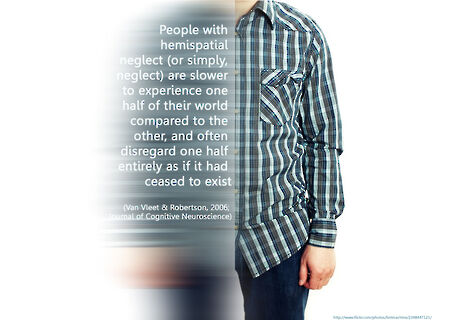Medicine with Maddie: Neglect
New columnist Maddie Leadon explores neglect, a fascinating neurological condition

Let’s imagine Patient X. He suffered a stroke on the right side of his brain, and doctors are hopeful for his recovery. He is able to speak and make decisions. However, his wife has noticed some puzzling symptoms. In the morning, Patient X will only shave the right side of his face, and he only ever eats food on the right side of his plate. He will only show interest in the right side of the newspaper, and he continuously walks into the left of door frames. His wife feels that if she speaks or approaches him on his left side, he ignores her, yet if she moves to his right, he is able to engage in perfectly normal conversation. Most bizarrely, Patient X seems completely unaware of the situation and completely denies there is a problem.
Patient X suffers from hemispatial neglect, a condition more common than one might think, caused by damage to one side of the brain. Essentially, it results in a failure to perceive objects or stimuli located on one side of space – the opposite (contralateral) side to the damaged half of the brain. The condition can be incredibly debilitating – patients often cannot go out alone, as they cannot see potential dangers coming from one side.

In serious cases, patients may reject ownership of their contralateral limb, express dislike of it, or even fail to use it at all, despite the absence of physical weakness. What is striking about the condition is that patients often deny any problems (anosognosia) or completely underestimate the severity of the problem. This can make it difficult for doctors to assess the problem, as patients may give an unreliable description of their symptoms. A classic diagnosis method is the clock drawing test: patients asked to draw a clock typically only draw half of the clock face, but say the drawing is finished.
The area of the brain normally associated with neglect is the right inferior parietal lobe, which is involved in sensation, perception and integrating different sensory inputs. Interestingly, the visual system itself is completely intact: patients are not blind. They simply ignore one half of their visual field.
Thankfully, many stroke patients recover within a few weeks. However, outcomes are variable and some patients do not recover fully. It is said that US President Woodrow Wilson showed several features of neglect after a stroke in 1919 – his aides had to ensure all guests were ushered to his right side, to prevent him ignoring any important foreign dignitaries. In recent years, there have been many research efforts to treat neglect: eye patches, visual field expanders and ‘hemiglasses’ have all been used to force patients to look at the half of their visual field they usually ignore, and other research has concentrated on occupational therapy to help rehabilitate patients, pharmacological treatments and ‘Transcranial Magnetic Stimulation’.
It is nearly impossible to imagine the world from a neglect patient’s point of view: this is what makes the condition so interesting and challenging to understand.
 News / SU stops offering student discounts8 January 2026
News / SU stops offering student discounts8 January 2026 News / Uni-linked firms rank among Cambridgeshire’s largest7 January 2026
News / Uni-linked firms rank among Cambridgeshire’s largest7 January 2026 Comment / Plastic pubs: the problem with Cambridge alehouses 5 January 2026
Comment / Plastic pubs: the problem with Cambridge alehouses 5 January 2026 News / New movement ‘Cambridge is Chopped’ launched to fight against hate crime7 January 2026
News / New movement ‘Cambridge is Chopped’ launched to fight against hate crime7 January 2026 Comment / What happened to men at Cambridge?31 December 2025
Comment / What happened to men at Cambridge?31 December 2025








